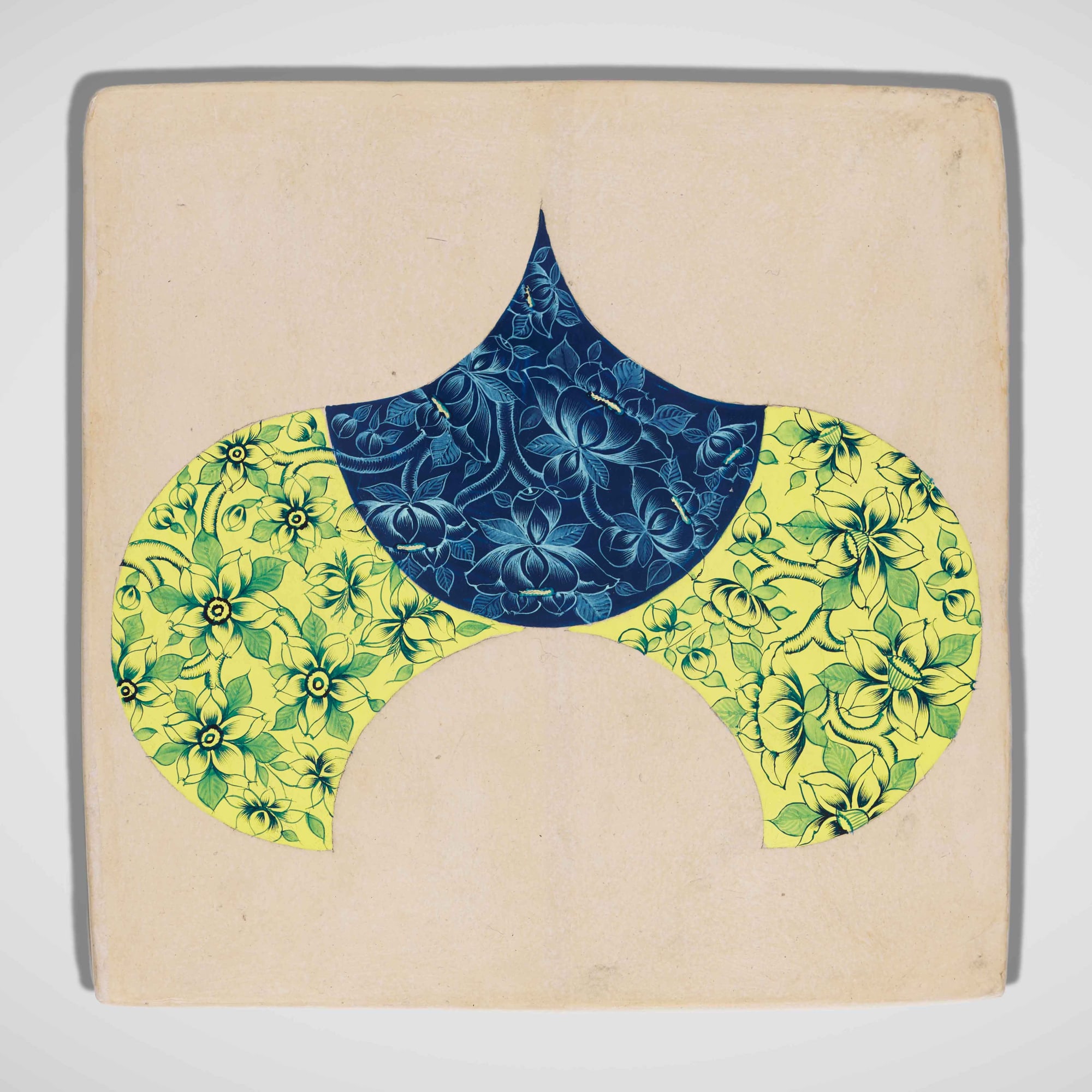These tiles form part of Soi's most recent immersion in Srinagar, where since 2014 he has been experimenting with his imagery rendered by the use of Kashmiri motifs painted as a part of an ongoing commission with the master craftsman Fayaz Jan. The tiles they are painted upon are an extension of the craft of papier-mâché that is ubiquitous in the craft industry of Kashmir.
Soi was fascinated to learn that the craft is an import, carried into the valley by Sufi preachers travelling from Central Asia. He developed the material as tiles, a process that took a year to finesse, thus creating canvases that he could work upon. The tiles consist of a papier-mâché core, over which clay from the river Jhelum—that runs through the city—is layered to smoothen the rough papier-mâché surface. It is then layered over with thin tissue paper and sealed with saresh. This process gives the tiles an absorptive surface, making painting upon them extremely pleasurable.
In Avian Window, isolating the blocks that make patterns, Soi began to see how adding them together formed windows that were interesting. Bird-like forms appeared, as in this work, tying pattern to figuration. Soi decided to use them as windows in which the artisans could experiment with their motifs. These compositions are experimental and differ from the patterns ubiquitous in the craft industry. Soi’s immersion with the craftsmen in the karkhana workshop have led to a continuing conversation that unfolds as formal experimentation of these motifs, pushing away from the colouring typically used for the craft industry. Soi often explores the idea of the unfinished, or the adhura: halting the craftsman’s work at a moment where he feels the hand’s supremacy is still visible and not stifled by excessive finishing.

